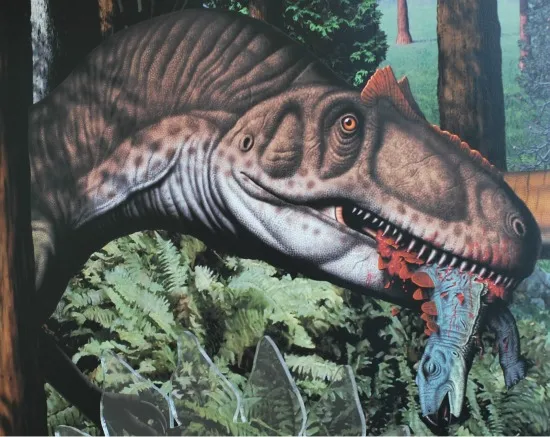America’s Real Jurassic Park Re-Opens
The quarry wall strewn with hundreds of bones representing some of the most famous dinosaurs is now open to the public again
/https://tf-cmsv2-smithsonianmag-media.s3.amazonaws.com/filer/20111006093009dnm-quarry-thumb.jpg)
Two summers ago, I visited Dinosaur National Monument for the first time. The park was one of the most beautiful places I had ever seen, but, I have to admit, I left a little disappointed. Ever since I was a dinosaur-crazed kid I wanted to see the famous quarry wall strewn with hundreds of bones representing some of the most famous Late Jurassic dinosaurs. But when I arrived, the building that housed the bones had already been closed for three years. The geology of the site worked against the edifice by expanding and contracting by minute amounts over and over again—so much so that parts of the building had shifted dramatically and put the entire structure at risk of collapse.
Not long before my initial visit, though, it was announced that the park would receive more than $13 million to restore the building and welcome visitors once more. I couldn’t wait for the grand re-opening, especially after I spent more than a week and a half looking for new fossils at the monument with the Natural History Museum of Utah field crew this past summer. I saw the quarry building from the road every day I was in the field, but I had to wait until October 4, 2011 for the doors of the quarry to once again open to the public.
As it stands now, the famous quarry wall is only a portion of what once was. The site once extended about 100 feet to either side of the current quarry face, and the bonebed also extended upwards to a higher hill that paleontologist Earl Douglass and his co-workers removed during the early 20th century. Many of the fossils they discovered in those parts of the quarry can now be seen at museums such as the Carnegie Museum of Natural History in Pittsburgh. (Those old bones were recently refurbished in a new dinosaurs exhibit I got to see during last year’s SVP conference.) Nevertheless, the quarry face is still a beautiful site. Partially articulated limbs, a sauropod skull situated on the end of a vertebral string, parts of various spinal columns and numerous isolated bones can be seen poking out all over the rock face. That’s how they will remain—prep work has stopped on the fossils, and they will stay in their place as a lesson about life and death 149 million years ago.

The bones are the main draw, of course, but the new museum also boasts some impressive extras. Several skeleton casts on the lower level introduce visitors to some of the charismatic creatures seen scattered over the quarry wall, and a beautiful mural by artists Bob Walters and Tess Kissinger fleshes out Late Jurassic dinosaurs such as Stegosaurus, Torvosaurus, Dryosaurus and Apatosaurus, in addition to the many small mammals and reptiles that lived alongside them. Make sure you turn around to look at the mural behind the baby Stegosaurus cast when leaving the building—I don’t think I have ever seen an illustration of an Allosaurus chomping down on a baby Stegosaurus before.
More updates and improvements are scheduled but were not ready at the time of the big unveiling. The museum will include virtual displays that will explain how so many dinosaurs came to be accumulated in one spot, as well as what bones on the quarry wall correspond to which dinosaurs. Even without those extras, though, the new quarry wall is a fantastic testament to deep time, evolution and a lost world we are still striving to understand.
For more details about Dinosaur National Monument, see the Dinosaur National Monument Quarry Visitor Center Project blog. The blog is written by Dan Chure, the park’s paleontologist.
/https://tf-cmsv2-smithsonianmag-media.s3.amazonaws.com/accounts/headshot/RileyBlack.png)
/https://tf-cmsv2-smithsonianmag-media.s3.amazonaws.com/accounts/headshot/RileyBlack.png)